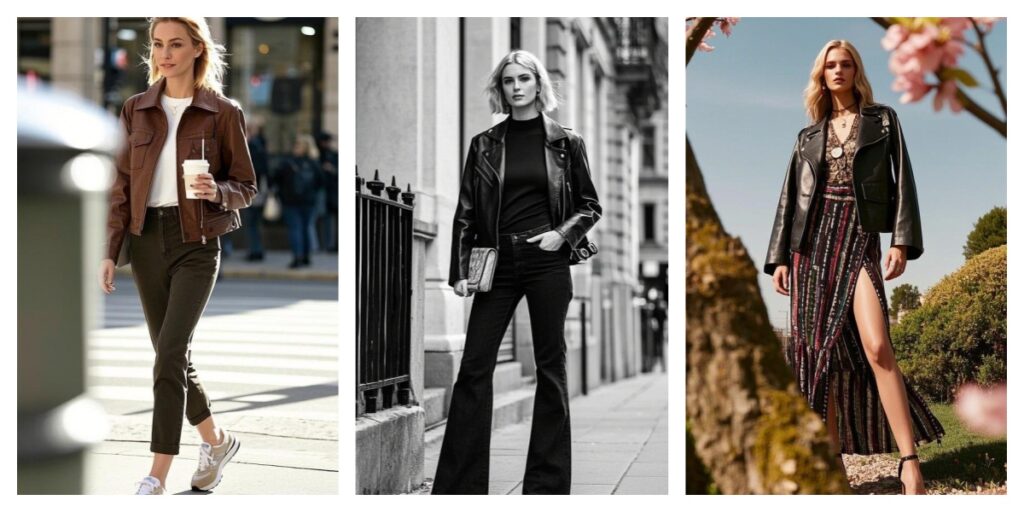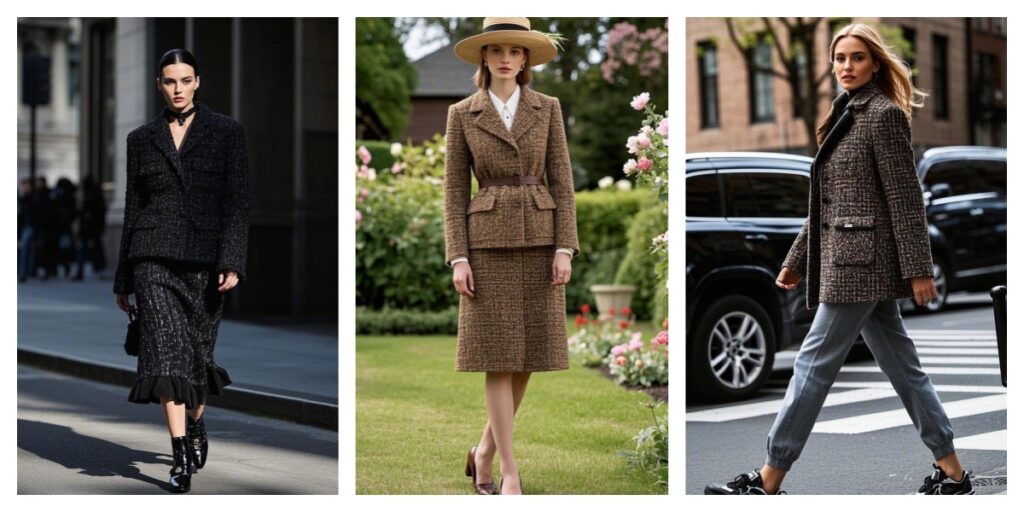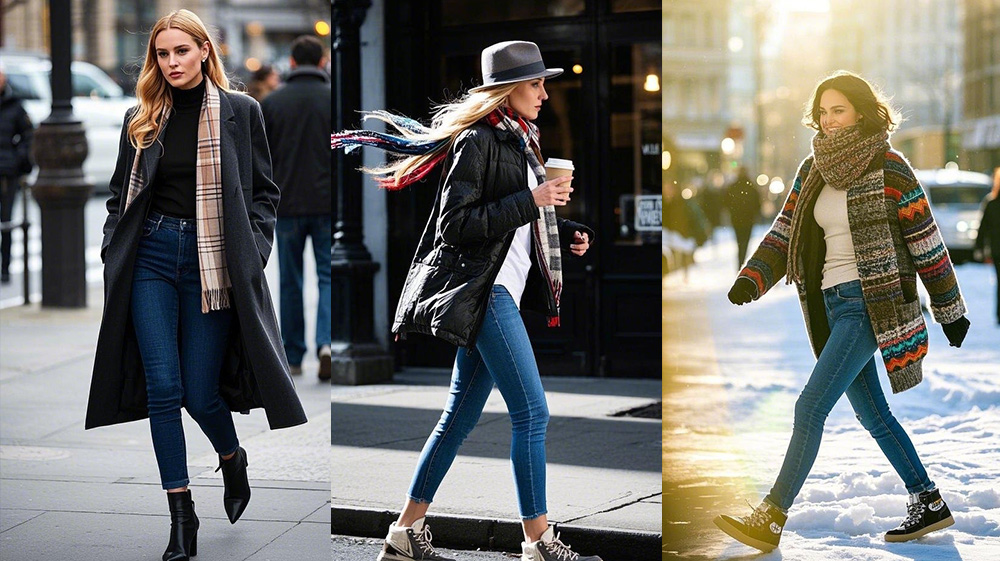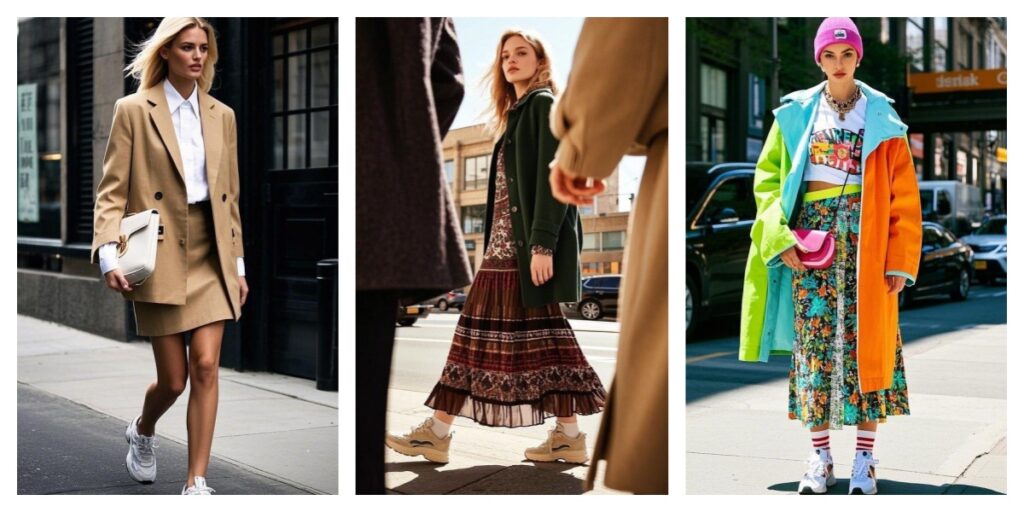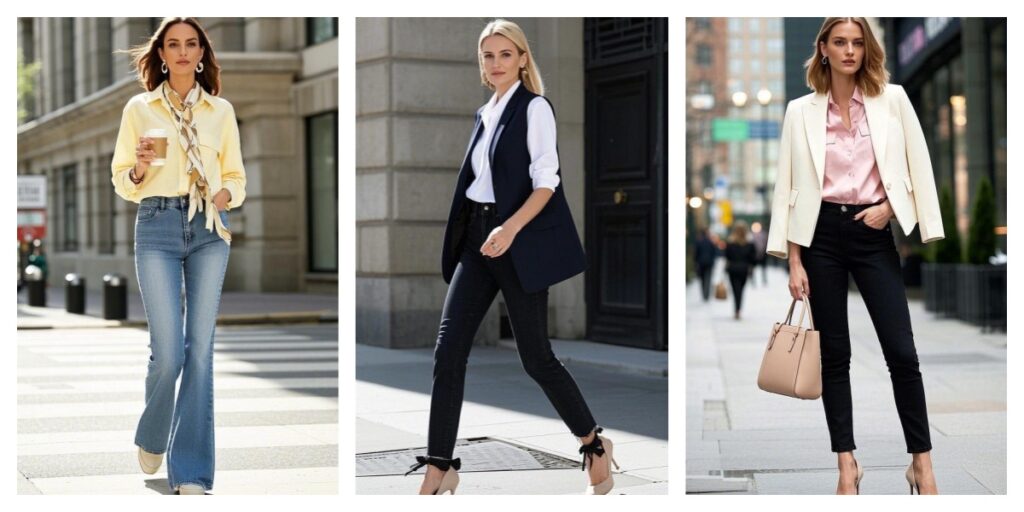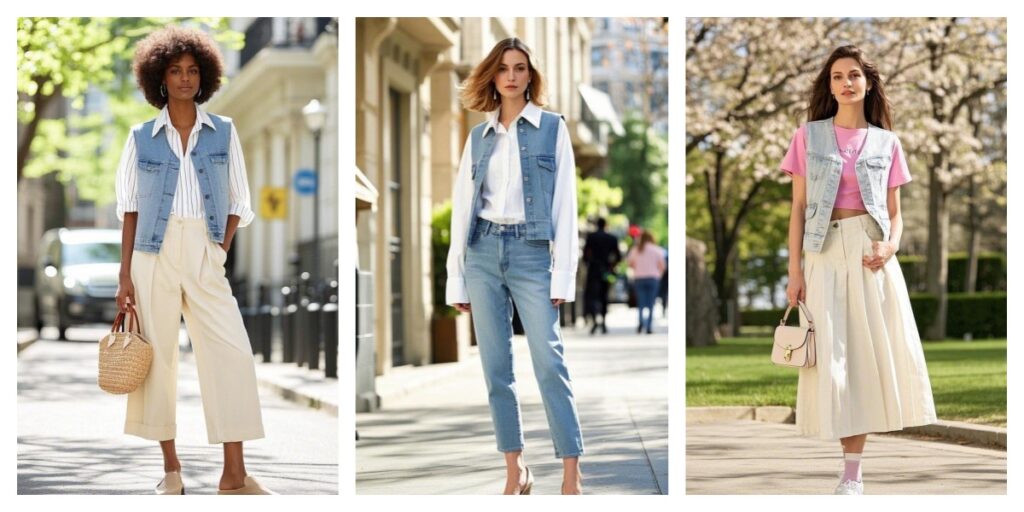Introduction
“Boho” is shorthand for “bohemian,” a word that once described the non-conforming artists and writers of 19ᵗʰ-century Paris who lived for art, conversation, and adventure rather than status or possessions. Over time the label evolved into a full-fledged aesthetic that champions individuality, sustainability, and wanderlust. Today, search-engine data confirms a steady rise in boho-inspired queries—everything from “macramé wall hanging DIY” to “flowy tiered skirt outfit”—showing how the look has infiltrated closets, living rooms, and Pinterest boards alike. The appeal is clear: boho makes room for personal storytelling. Every scarf, every chipped ceramic mug, every mix-matched pillow says, “I collected this on my journey.” In the pages that follow, we’ll unpack those visual cues—silhouettes, textiles, color stories, and décor touches—that instantly signal boho, so you can weave the spirit into your wardrobe or home without feeling like you’re wearing a costume or living in a showroom.
1. Origins and Philosophy of Boho Style
Boho culture took root in the cafés of 1800s Paris, where poets and painters pushed against class conventions by wearing loose clothing, repurposing workwear, and decorating their rented garrets with flea-market finds. That anti-establishment energy resurfaced a century later in the 1960s, when travelers on the so-called “hippie trail” through Morocco, India, and Nepal mailed embroidered jackets and block-printed sarongs home to friends. These pieces blended effortlessly with surplus army jackets, denim flares, and hand-knit sweaters, cementing a style vocabulary rooted in freedom, cultural fusion, and creative reuse. Philosophically, boho insists that clothes and décor should feel like souvenirs of a life well lived. They need not match, and sometimes they shouldn’t, because harmony often blooms from happy accident rather than rigid planning. If minimalism tells us to edit, boho tells us to layer—stories, textures, memories—until the sum feels warm, human, and unmistakably yours.
2. Signature Clothing Elements
Long, sweeping skirts and dresses form the backbone of a boho wardrobe. They echo the shape-shift of wind and make each step cinematic, whether you’re strolling a farmers’ market or tiptoeing across a music-festival field. Look for cotton tiers that crinkle gracefully, wrap dresses in block-printed silk, or prairie cuts trimmed with tiny shell buttons. Peasant blouses, embroidered tunics, and open-weave crochet tops build the upper half of the silhouette. Balloon sleeves cinch at the wrist, crocheted yokes reveal sun-kissed shoulders, and metallic thread glints under café lights.
Layering, almost ritualistic in boho dressing, helps balance proportion and temperature alike. Toss a vintage denim vest over a wispy gauze dress, knot a batik scarf into a makeshift belt, or shrug into a velvet kimono when evening temperatures dip. Fringe—on sleeves, hems, and cross-body bags—amplifies motion and adds subtle percussion to every stride. Finally, vintage textures such as faded velvet, raw silk, or patchworked suede ground airy pieces with tactile heft, ensuring an outfit feels collected, not costume-like.
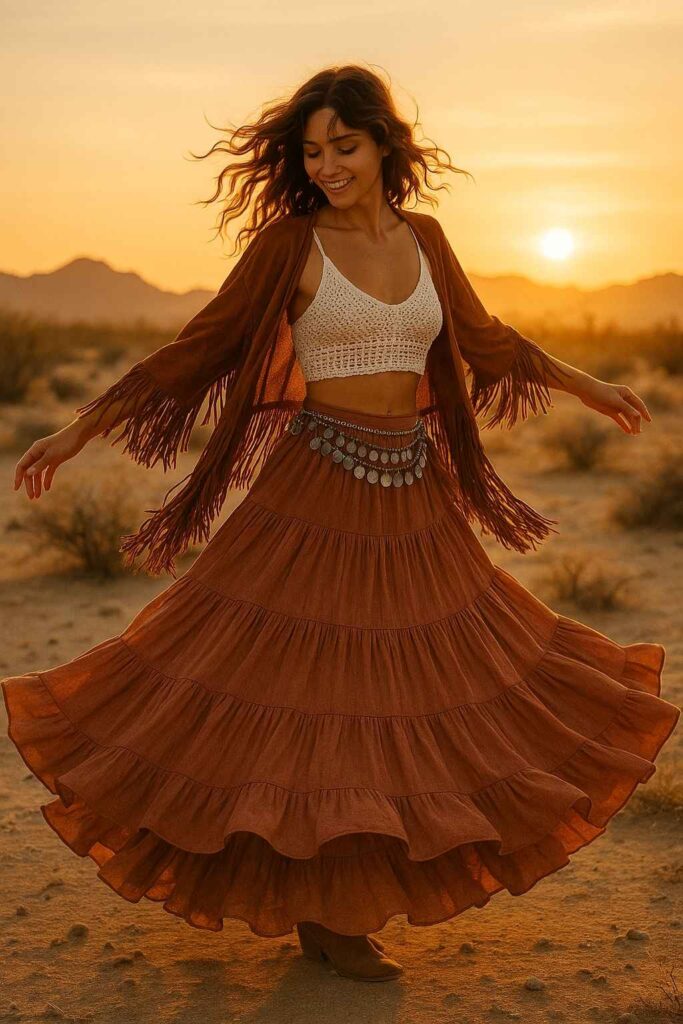
3. Common Boho Fabrics and Patterns
Natural fibers dominate because they breathe, drape, and age gracefully. Lightweight cotton whispers on the skin during humid afternoons, while loosely woven linen keeps things breezy at coastal bonfires. Hemp, prized for durability, brings subtle texture to tote bags and baker caps. Silk—especially when digitally or hand-printed—offers a hint of luxe that still feels organic.
Pattern play is where boho truly shines. Paisley teardrops curve across skirts like rivers on a map, tribal chevrons reference Navajo and Berber weaving traditions, and botanical florals climb kimono sleeves in painterly strokes. Ikat blurs its own edges, reminding us that perfection is dull compared to craftsmanship. The trick lies in contrast: pairing delicate lace with rough suede, coupling faded denim with soft crochet, or wearing a slouchy cashmere cardigan over an iridescent sari-print slip dress. Texture mixing adds depth, avoids matchy-matchy clichés, and makes the outfit feel discovered rather than manufactured.

4. Boho Accessories and Footwear
Accessories are the exclamation points of boho style. Feather earrings sway like wind chimes, and chunky turquoise or jasper stones anchor the look to the earth. Stacked bangles—whether hammered brass, carved horn, or candy-colored resin—create a melodic clink that functions as a walking soundtrack. Wide-brimmed wool or felt hats serve both form and function, shading festival faces while adding instant drama to a jeans-and-tee ensemble.
Bags lean tactile: think buttery leather bucket totes with whip-stitched seams, mirror-work sling bags from Rajasthan, or hemp macramé cross-bodies that double as produce carry-alls. Footwear skews comfortable but never bland. Lace-up gladiator sandals recall ancient craftsmanship; soft-soled moccasins mold perfectly to feet, while weathered suede ankle boots (often topped with conchos or fringe) ground floaty skirts in cooler months. Slip them on, and you’re ready to navigate cobblestones, campgrounds, or an impromptu drum circle.
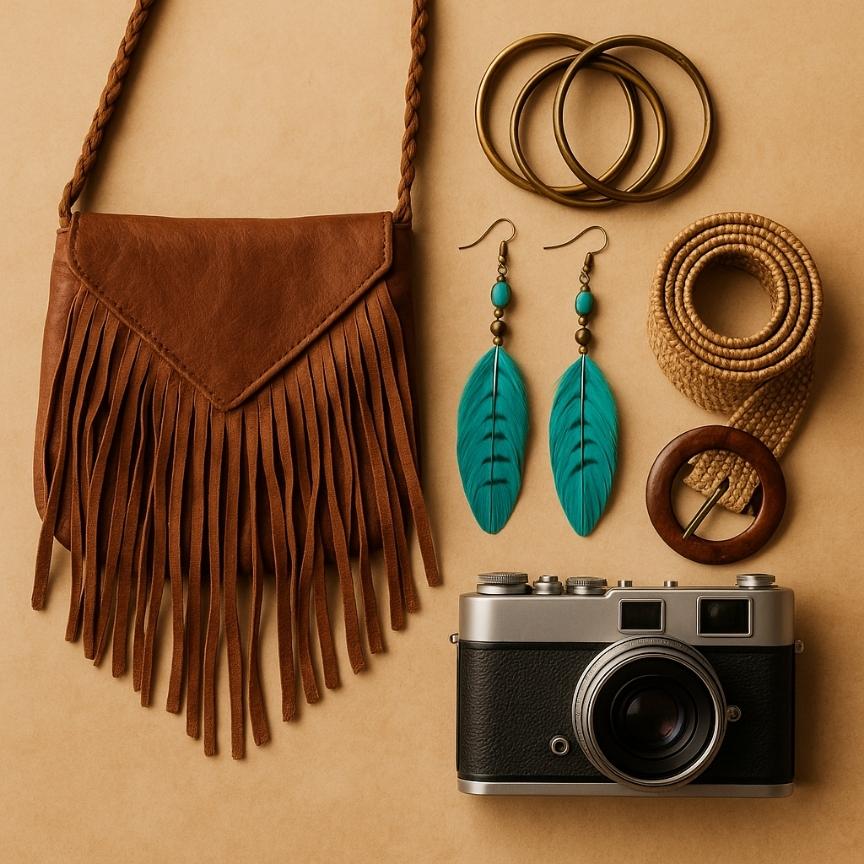
5. Boho Color Palette
Imagine walking through a canyon at golden hour: sun-bleached beige cliffs above rust-reddish soil, sagebrush greens at the edges, and dusky plum shadows stretching long. Those earth tones—terracotta, clay, olive, sand—form boho’s grounding neutrals. Then come the jewels: a pop of turquoise like an alpine lake, mustard like pressed marigold petals, emerald like deep moss, plum like ripe figs.
Color application is rarely solid; ombré, tie-dye, and sun-fade techniques soften boundaries so hues bleed into one another like watercolor on wet paper. Layering multiple tones creates dimension, while tonal dressing in varying shades of one hue feels sophisticated without sacrificing warmth. The result? A palette that looks lifted directly from nature and therefore plays well with almost everything in your closet.
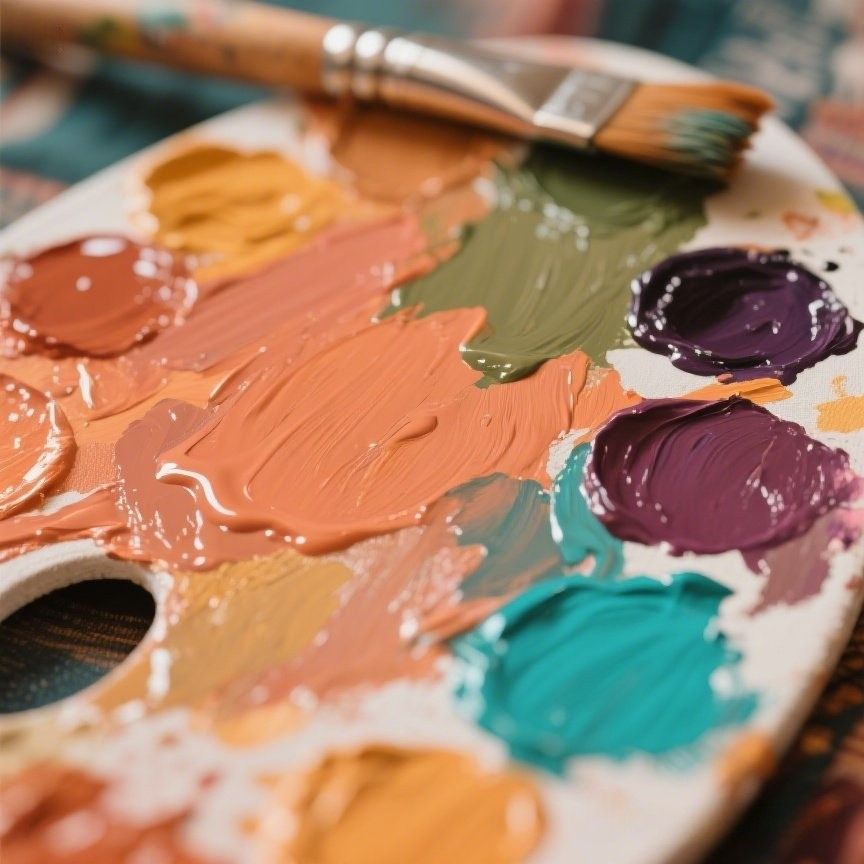
6. Boho Hair and Beauty Aesthetic
Think effortless, not careless. Hair often falls into loose waves coaxed with sea-salt spray or heatless braids undone at dawn. Microbraids can be woven discreetly near the temple, while chunky side plaits evoke medieval romance. A messy half-up bun secured with a carved wooden pin nods to sustainability and craftsmanship.
Makeup stays sun-kissed: warm taupes and bronzes for the eyes, peachy cream blush dabbed on cheeks, and a sheer berry stain pressed onto lips with fingertips. Highlighter is less shimmer, more dew—think lit-from-within rather than strobe-light glow. Temporary adornments add whimsy: henna spirals lining forearms, metallic flash tattoos catching campfire light, or flower crowns resting atop wind-tousled hair during springtime picnics. Hair beads fashioned from recycled glass or brass tell tiny stories every time they glint.
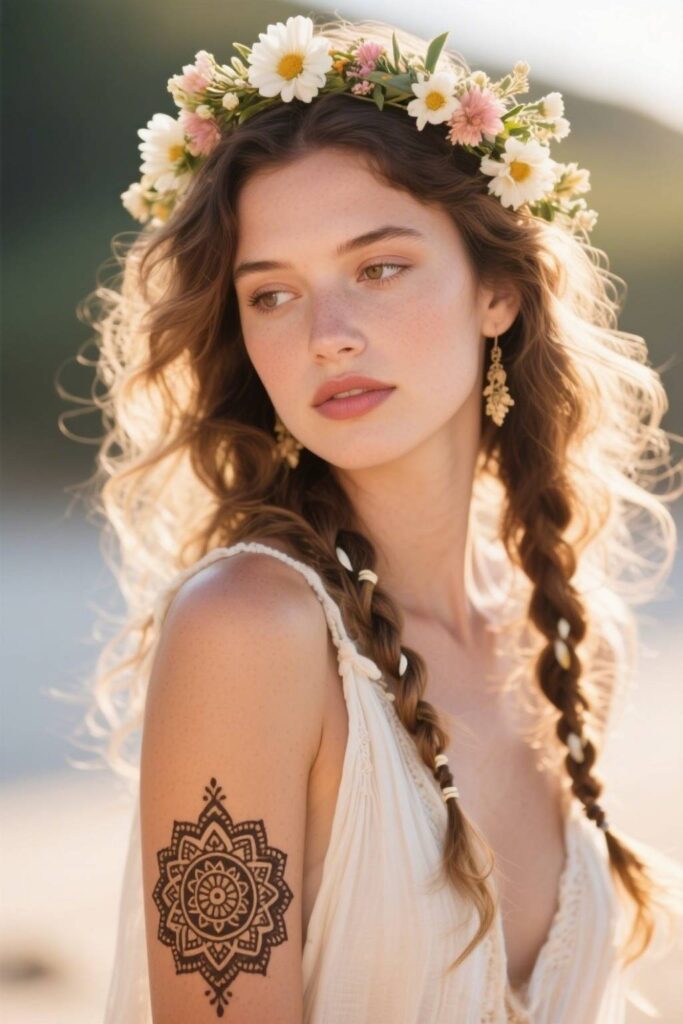
7. Boho in Modern Styling
Scroll through any social feed and you’ll see how today’s tastemakers update boho’s vintage heartbeat. A crochet crop top might pair with high-waisted cigarette trousers, merging breezy romance with city structure. An oversized paisley scarf knotted under the collar of a crisp white blazer brings color and story to boardroom neutrals. Even tech-centric brands release capsule lines filled with embroidered denim or recycled cotton dusters, acknowledging consumers who crave authenticity alongside function.
Boho-chic—the fusion of boho’s softness with minimalist tailoring—allows wearers to flow from farmers’ market to co-working space without a costume change. Festival fashion still leans maximal: body chains, kaleidoscopic tie-dye, and luminous face gems under neon stage lights. Everyday boho, meanwhile, might simply be a fringed cross-body bag with faded jeans or a vintage Afghan coat thrown over a slip dress on cold mornings. The through-line is intention: choose pieces that speak to you, combine them intuitively, and let personal narrative outrank trend memos.
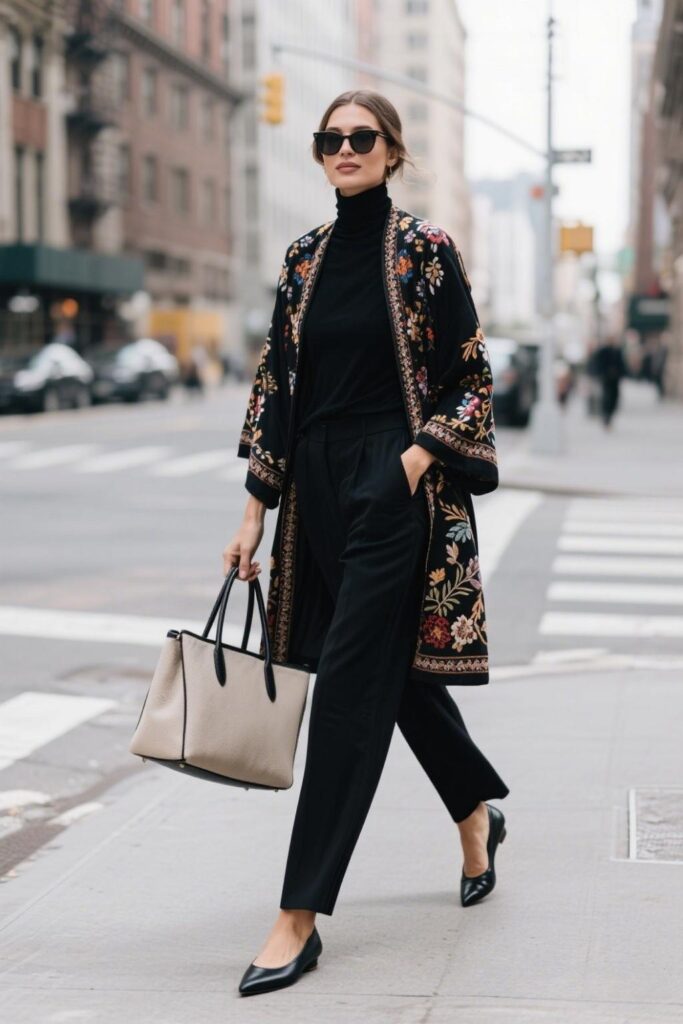
8. Visual Cues in Boho Home Décor
Walk into a boho living space and you’ll first notice layers: Persian, kilim, and Berber rugs overlapping like well-traveled passports. Low rattan chairs soften with kantha quilts; macramé wall hangings dance above potted monstera leaves; bookshelves double as altars to clay pots, driftwood, and framed Polaroids. The furniture rarely matches in period or finish, yet a through-line of earthy tones and handmade details pulls everything together.
Plants are nearly mandatory—trailing pothos, sculptural cacti, or a fiddle-leaf fig towering in the corner—because greenery oxygenates both air and mood. Lighting leans warm: brass Turkish lanterns cast filigree shadows, Himalayan salt lamps glow peachy, and beeswax candles drip onto terracotta saucers. Décor items often carry stories: a Tuareg leather pouf bought at a night market, a woven basket from a community craft fair, a chipped enamel mug discovered at a roadside thrift. Altogether, the space feels less like a catalogue and more like a memoir you can sit inside.
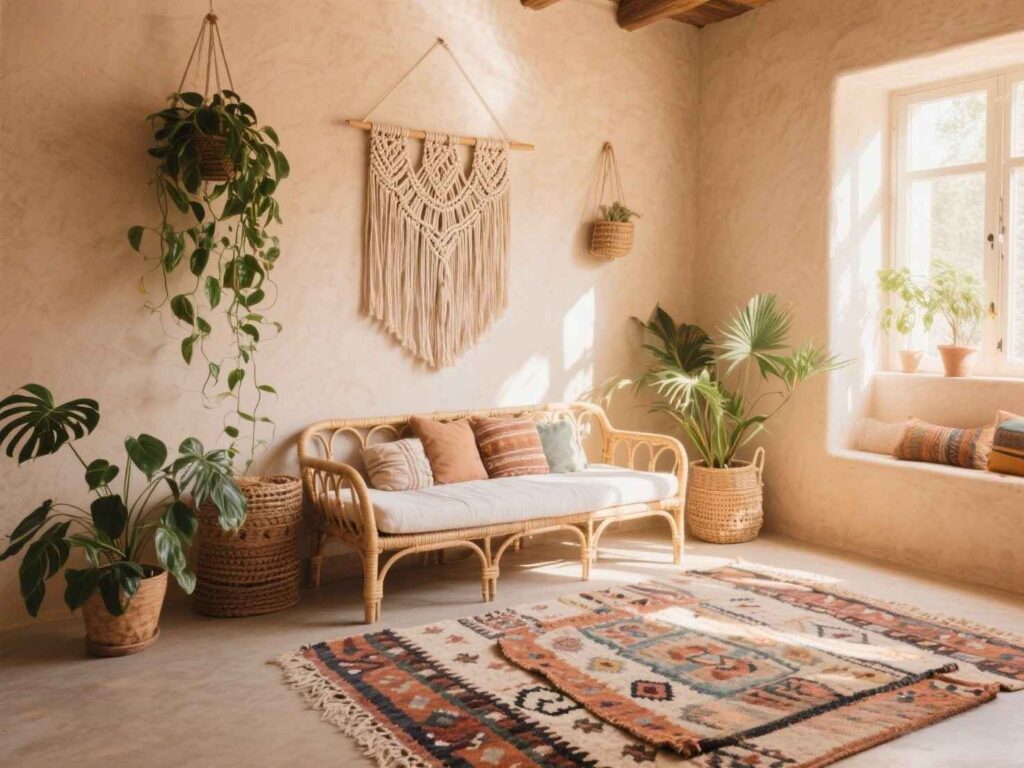
Conclusion
From wind-catching maxi skirts and paisley silk scarves to stacked bangles and rattan peacock chairs, boho style thrives on organic textures, global storytelling, and fearless layering. It welcomes imperfections—faded dye, frayed edges, mismatched patterns—because each mark proves an item has lived a life of its own. At its loftiest, boho declares that individuality and artistry should trump mass conformity; at its humblest, it simply invites you to surround yourself with things that make you smile. Mix a desert-rust throw pillow with a sapphire-blue kimono, braid a single feather into your hair, or string fairy lights above a thrifted velvet sofa—whatever feels like your chapter in the larger bohemian chronicle. Remember, the goal isn’t to replicate someone else’s caravan of treasures but to reveal your own. Celebrate curiosity, honor craftsmanship, and let your personal patchwork sing.

